Previously, in Comics 101: We’ve been discussing the original Stretching Sleuth in recent weeks, Jack Cole’s Golden-Age creation for Quality Comics, Plastic Man. When we left off, Plas had acquired a sidekick in the affable if dimwitted Woozy Winks, and his creator Jack Cole was just beginning a decade-plus run on the character that would see more than a few highlights artistically and comedically. Let’s take a look at a few, shall we?
While usually Plastic Man would run against gangsters and crime bosses, occasionally Jack Cole would come up with a superpowered foe for Plas to contend with. One of my favorites was Lava Man, from PLASTIC MAN #2 (August 1944).
In the story, Plastic Man is hot on the trail of bank robber Fargo Freddy, chasing him through Capital City (Plas’ hometown, by the way) all the way to the airport, where the two each commandeer airplanes and continue the pursuit. The two planes chase each other all the way to Mexico, where Plas makes a stretchy attempt to pluck Freddy from the cockpit of his plane, only to accidentally drop him into the mouth of a bubbling volcano (Freddy had killed a bank guard in the robbery, so since he was headed for the electric chair anyway, Plastic Man wasn’t too broken up about it). Rather than being fried by the molten lava, Freddy’s body is transformed into the lava and gains amazing shapechanging abilities, as explained by the volcano’s other resident, a man who fell in over five centuries earlier, and refuses to leave because it’s so warm and toasty down there.
Freddy catches the next exploding boulder out of the volcano and stows away on a truck back to Capital City, with big plans for a crime wave and revenge on Plastic Man. Soon enough, Plas tries to stop Freddy’s next bank robbery, only to be tackled and nearly melted into a puddle of liquid rubber. Plas elects the better part of valor, and makes a run for it, trying to figure put a way to stop the pursuing Freddy. Running past the train yards, Plastic Man spots a refrigerated car and quickly lures Freddy inside, where the frigid air hardens his molten body. Once Freddy had immobilized into solid rock, a single punch from Plas shattered him into a pile of rubble.
Fortuitously, Plas just leaves the rubble in the train, and the door just happens to pop open as the train passes through Mexico, allowing Freddy to return to the safety of his new volcano home. Cole’s extracartoony rendering of Lava Man is hilarious, especially compared to the quasi-cartoony Plas and Woozy and the more realistic-looking human supporting characters.
Plastic Man tangled with a supervillain of a different color in POLICE COMICS #58 (Spetember 1946), when he ran up against “The Green Terror.” A botanist determined to help the plant world rise up and conquer the rule of man, “Mr. Green” first sets off on a murder spree, killing everyone who had helped him make his super-scientific botanical discoveries, then plans to use his hypercharged plants for a new career of terror and robbery.
When Woozy and Plas stumble onto his greenhouse, Plastic Man battles his vegetable minions and burns the place down, and when Mr. Green fires a giant wooden javelin at him, Plas returns the favor, impaling him with the wooden stake, killing him.
Frankly, reading these stories, I hadn’t realized Plastic Man was such a hardass.
Remember when that awful Wayans Brothers movie LITTLE MAN came out last years, the one that was so patently a ripoff of the 1954 Bugs Bunny cartoon with “Baby Fenster,” the midget gangster posing as a baby? Well, it turns out the idea goes back even further than that, as Jack Cole had the idea first in 1946 in POLICE COMICS # 61, in “A Bundle of Trouble,” where a gangster named Lawbook Lawson offers the underworld $100,000 for the best idea for destroying Plastic Man. The winner? Goo-Goo Gates, a diminutive killer who plants himself on Plastic Man’s doorstep (apparently, Plas is listed) posing as an orphaned foundling. Once inside, first Goo-Goo tries the subtle approach, poisoning the baby formula that Plastic Man has announced his intention to sample.
When that doesn’t work, Goo-Goo opts for a more obvious tack, grabbing a nearby tommy-gun (nice job childproofing the place, by the way, Plas) and riddling the place with bullets. The jig up, Goo-Goo calls for his criminal confederates, but Plastic Man swiftly rolls the whole kit and caboodle down to the slammer.
Another of Plastic Man’s more colorful opponents made use of speed and agility to battle Plas: the Grasshopper, as seen in PLASTIC MAN #6 (Winter 1947). Here a small-time crook on the run from Plastic Man volunteers as a guinea pig in a scientist’s experiment to strengthen human leg muscles by injecting them with a serum extracted from the leg muscles of grasshoppers. It’s a fairly specific science, it seems. Once the serum is injected, the crook’s legs lengthen and become far more muscular and elastic, and the crook quickly abandons the scientist, cobbles together a green suit and embarks on a crime wave under his new sobriquet “The Grasshopper.” When he tries to make off with some crown jewels, Plas pulls the old pretend-to-be-a-table trick:
After his first attempt to catch the Grasshopper falters and he gets away with the goods, Plastic Man visits the scientist and gets a syringe full of leg-weakening extract, then sets a trap for his leaping foe, posing as the visiting Queen and offering a huge ransom for the jewels. Luckily for Plas, the Grasshopper has a glass jaw, so one sock to the chops and he’s out, allowing Plastic Man to shoot him up with the anti-serum.
Cole’s art took a darker, noir-ish turn in a story in PLASTIC MAN #10 (Winter 1947-1948), with an inking assist from Jack Spranger, as Plas contended with the electrically powered man-hating femme fatale Electra.
Plastic Man first encounters her after she kills her former partner in crime, the racketeering inventor known as “Wheels.” Plas tracks her to Wheels’ lab where she discovers that her electric power is useless against Plastic Man’s rubbery body.
Electra escapes by blowing up the lab, and later gathers up Wheels’ old gang for her own use. At the hideout, she startles her new minions with her unusual eating habits:
Tracking her down, Plas and Woozy infiltrate her hideout, and Plas easily takes down her gang. When Electra hurls a bomb at Plastic Man, it naturally bounces right off of his elastic noggin, boomeranging back to her before it explodes. Surveying the wreckage, Plastic Man discovers that Electra was hiding a larger secret:
Cole left the PLASTIC MAN strip by the beginning of the ’50s, although it still kept his byline. PLASTIC MAN continued to be published until 1956, when Quality Comics went out of business. DC Comics purchased the Quality Comics characters, and the company tried several times to give him a new solo series, first in 1966, written by Arnold Drake and drawn by Gil Kane, Win Mortimer and Jack Sparling, and then again in 1976, written by Steve Skeates and drawn by Ramona Fradon. Neither series found much success, both lasting only 10 issues each.
Plastic Man would find much more success in the ’70s on the small screen, first with a guest-starring role on ABC’s SUPERFRIENDS in 1973, then with his own Saturday-morning series in 1979, THE PLASTIC MAN COMEDY/ADVENTURE HOUR.
THE PLASTIC MAN COMEDY/ADVENTURE HOUR featured Plastic Man (voiced by the ever-present Michael Bell), a southern-belle sidekick named Penny (whom Plas curiously seemed to have little interest in), and a Hawaiian version of Woozy Winks given the oh-so-culturally sensitive name of “Hula-Hula.” Yeesh.
Plas, Penny and Hula-Hula would fly around the globe in a giant red-and-yellow jumbo jet in search of crimes to solve, all while Hula’s bad luck (another reference to good old Woozy) would rain down on them, and while Plas would try to extricate himself from Penny’s amorous advances. Which made it all the stranger when, in 1980, the show was renamed THE PLASTIC MAN/BABY PLAS SUPER COMEDY SHOW, and featured Plastic Man and Penny’s elastic infant Baby Plas, who had inherited his father’s rubbery physique. Considering Plastic Man’s total lack of interest in Penny the season prior, even to my 9-year-old mind, the notion of them getting married over the summer seemed contrived. And the constant focus on the cloying Baby Plas made what was already a marginal show downright unwatchable.
Plastic Man would show up in cameo appearances in DC Comics throughout the ’70s and ’80s, particularly in issues of Roy Thomas’ WW II series ALL-STAR SQUADRON. But it wasn’t until Grant Morrison gave Plastic Man the spotlight in his run on JLA that the character really moved back into the forefront of the DC Universe, utilizing him instead of Ralph Dibny as the League’s resident stretching hero, with Batman declaring Plastic Man “more versatile.” Morrison utilized Plastic Man to fine effect in his run, using him primarily as comic relief as the sort of “resident Jim Carrey” on the team, with all sorts of wacky takes and wild reaction shots.
After Morrison departed the book, later writers tried to beef up Plastic Man’s characterization, giving him everything from a split personality to amnesia to a 10-year-old son he never knew he had, but none of it worked as well as Morrison’s use of Plas as a walking Tex Avery cartoon. Attempts at solo miniseries and monthlies for the character in recent years have met with little success, including a critically acclaimed series from multiple Eisner-award winner Kyle Baker.
As for Jack Cole, his career went off in a whole new direction after leaving comic books, providing cartoon illustrations for the then-new and wildly successful PLAYBOY magazine, starting in 1954.
Following a highly successful several years at PLAYBOY, Cole realized a life’s ambition in 1958 with the publication of his daily newspaper comic strip, BETSY AND ME, which was syndicated in 50 newspapers nationwide. Cole wouldn’t live to enjoy his success, however. Only months after the debut of his strip, on August 15, 1958, Jack Cole shot himself in the head with a .22-caliber rifle, parked at the side of the road in his Chevy station wagon, not far from his home in Cary, Illinois. Although Cole mailed suicide notes both to his wife Dorothy and his boss, PLAYBOY publisher Hugh Hefner, his suicide remains a mystery to this day.

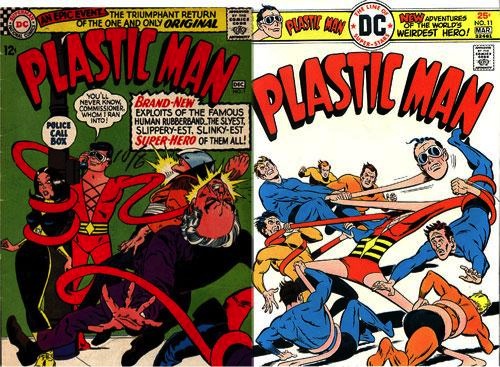

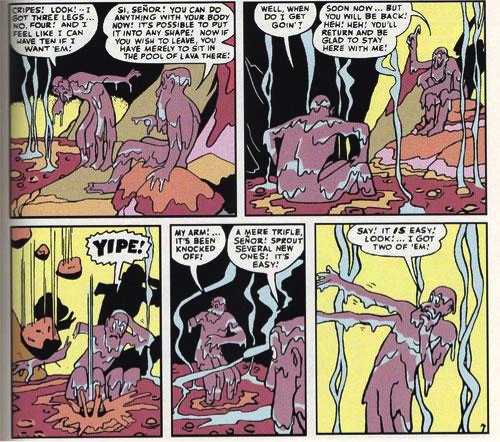
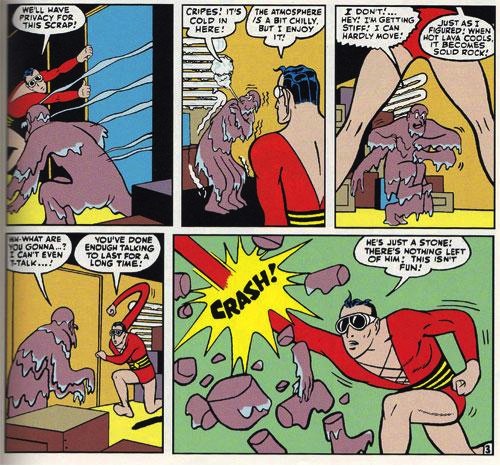
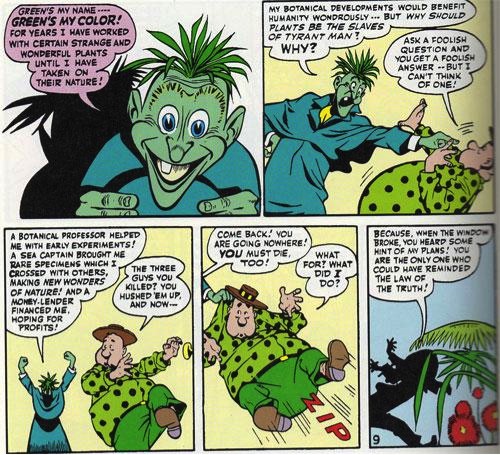
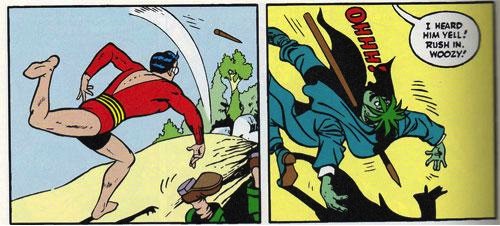
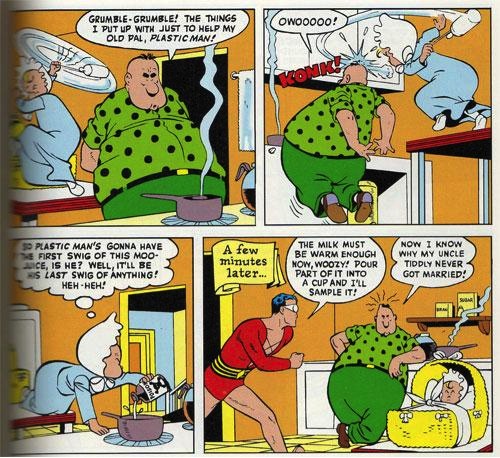
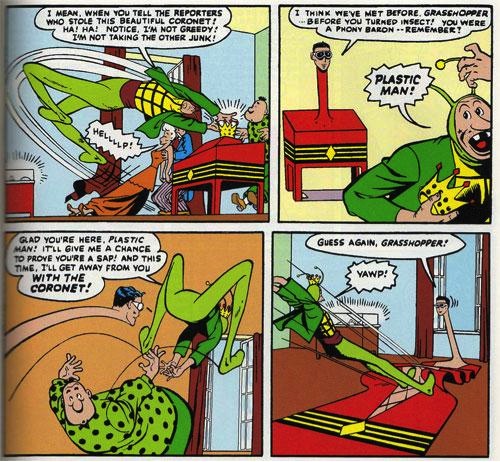
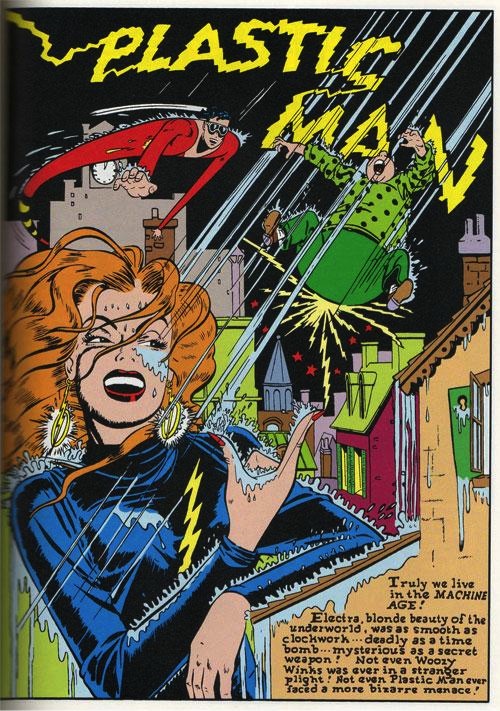
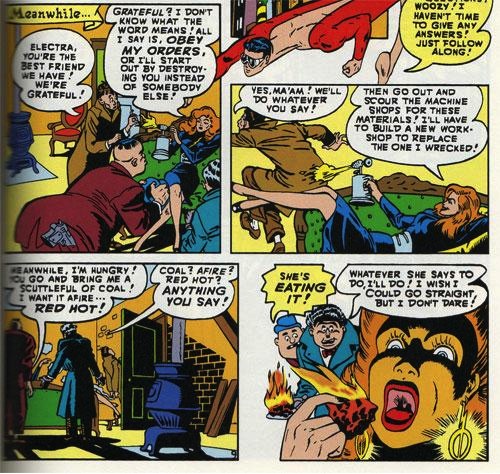
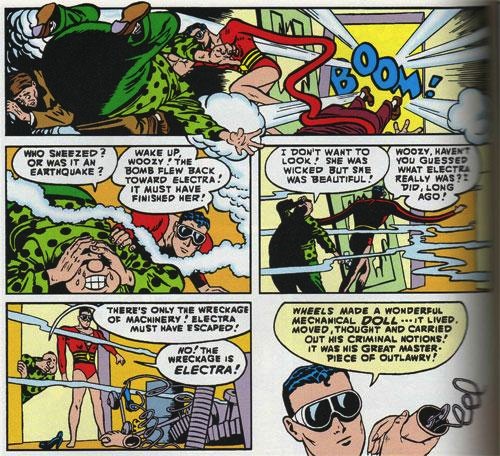

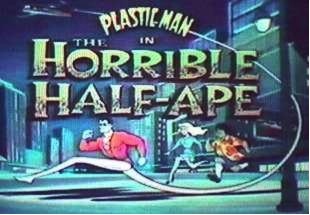
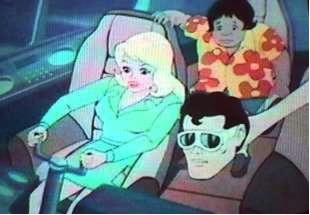
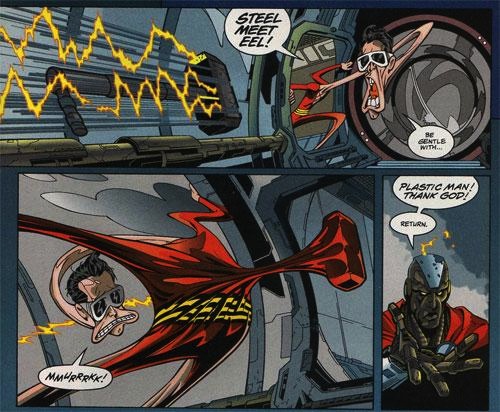
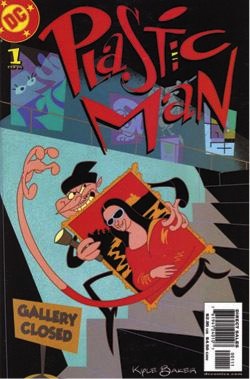

Comments are closed.